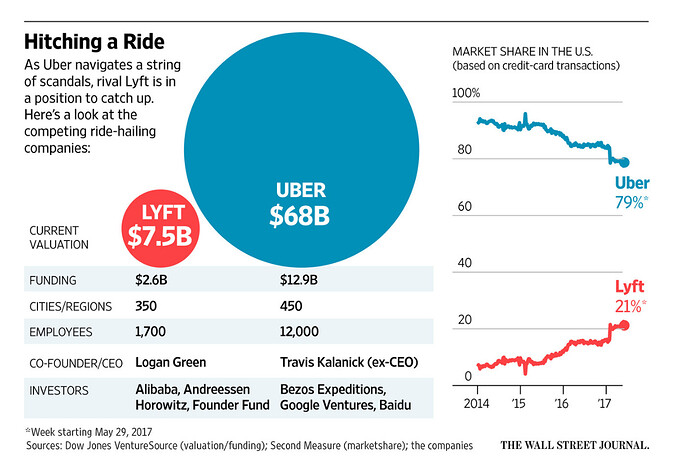A traditional industry gets disrupted, then starts to adapt.
Much has been said about Uber’s multiple self-inflicted wounds during a period of very rapid growth and that are now being fixed. The reporting and commentary have tended to cloud the extent to which the company’s innovative approach has transformed urban transportation. Last week, on a trip to London, I was vividly reminded of the next stage of this transformation by a traditional London taxi driver.
It is not easy to become a London cabbie. Applicants have to go through four years of training to acquire the legendary knowledge of the city’s streets, alleys, twists and turns. They are subject to licensing requirements and a host of regulations. They drive expensive black cabs, which have become icons. And, these days, they are heavily outnumbered by lightly regulated competitors who go through little training, drive their own cars and rely heavily on technology for client pickups, routes, payments and invoicing.
No wonder cabbies have been so upset with Uber, having tried several times – and failed – to stop the penetration of the ride-hailing company. Yet, judging from what I heard last week from one driver, the anger could be evolving.
After resisting everything Uber, the cabbie told me that he and his colleagues are shifting to a more constructive response – they are adapting. For example, he is part of a syndicate that now uses an app similar to Uber’s to provide riders with an expanded menu to hail and pay taxis, as well as offer them more control and transparency. The sector is a lot more willing and able to accept credit card payments. And it is all part of an effort to improve customer relations.
In a moment of frankness, he admitted that Uber has delivered a much-needed wake-up call. For him, it is no longer about stopping Uber; nor is it just about co-existence. A growing number of traditional taxis cabs are also embracing some of their rival’s best practices.
This is another illustration of the multiplicity of ways Uber has transformed, and is still transforming, the once-dominant world of black cabs, the most traditional and sophisticated market segment in global urban transportation.
The initial phases of Uber’s technology-led “disruptive innovation” proved particularly powerful because they lowered in a remarkable way the barriers of entry to both the supply of urban transportation services and the demand. Few disruptions influence both sides in such a dramatic and lasting fashion.
By allowing massively underused assets – personal vehicles otherwise sitting idle – to double as taxis, Uber significantly increased the provision of the service. And by measuring client satisfaction in a timely and high-frequency manner, it ensured that the bulk of this additional service would be clean, responsive, accountable, efficient, cost-effective and friendly.
The revolution on the demand side came from Uber’s understanding – and use – of the power of mobility, big data, and artificial intelligence. In doing so, it met the growing digitalization desires of clients (initially, mostly millennials, but increasingly encompassing a larger part of the population) eager to gain greater direct control over activities that had become ill-served, increasingly distanced and, in some cases, alienating. By also making the payments and settlement process more efficient and transparent, Uber further improved the experience for riders – leading many to substitute the service not just for other forms of public transportation, but also for private cars.
Due primarily to regulatory and legacy issues, Uber has not totally eliminated the incumbent taxis. But now these more traditional suppliers of urban transportation are forced to modernize and upgrade their services in an attempt to moderate the erosion of their diminished market share. And once again, the consumer benefits.
The Uber experience of beneficially influencing both supply and demand is still in its early stages, especially as it is sure to spread to other market segments and industries. It enhances the need for other companies, especially startups, to study not just Uber’s innovative accomplishments but also its internal failures, including the importance of culture, humility and ensuring that rapid growth is backstopped in a timely fashion by adequate structures, compliance and people. And all this will take place as a humbled Uber itself learns from past slippages and, judging from the series of recent encouraging announcements, course corrects, including through its own more timely self-disruption.
This article originally appeared on Bloomberg View.
https://www.linkedin.com/pulse/what-london-cabbie-taught-me-uber-mohamed-el-erian?trk=eml-email_feed_ecosystem_digest_01-hero-0-null&midToken=AQGJi1oRTEIk0A&fromEmail=fromEmail&ut=3JqEn6Y9Esv7Q1
![]()




